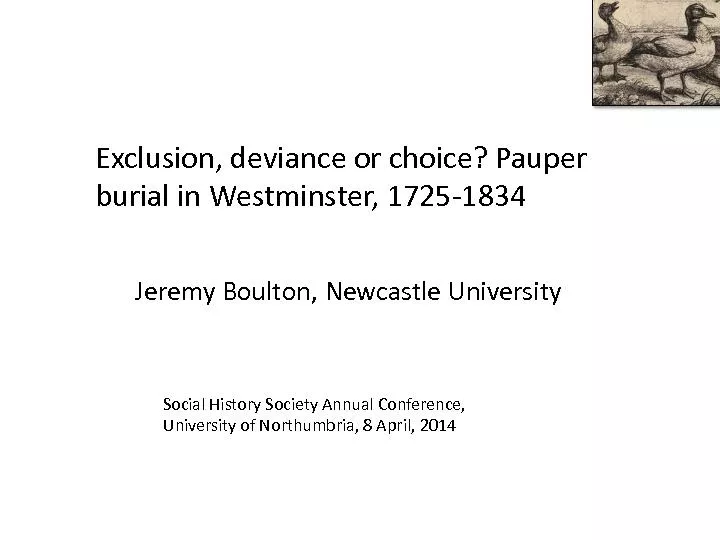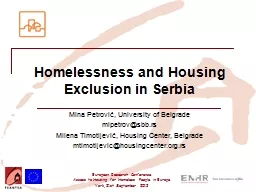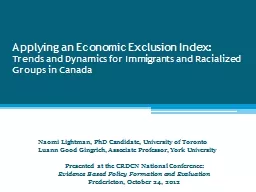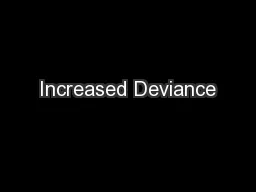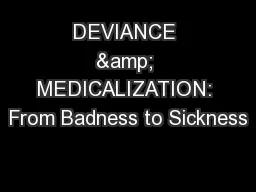PDF-Exclusion, deviance or choice? Pauper
Author : pamella-moone | Published Date : 2016-07-07
burial in Westminster 1725 1834 Jeremy Boulton Newcastle University Social History Society Annual Conference University of Northumbria 8 April 2014 Contents Local
Presentation Embed Code
Download Presentation
Download Presentation The PPT/PDF document "Exclusion, deviance or choice? Pauper" is the property of its rightful owner. Permission is granted to download and print the materials on this website for personal, non-commercial use only, and to display it on your personal computer provided you do not modify the materials and that you retain all copyright notices contained in the materials. By downloading content from our website, you accept the terms of this agreement.
Exclusion, deviance or choice? Pauper: Transcript
Download Rules Of Document
"Exclusion, deviance or choice? Pauper"The content belongs to its owner. You may download and print it for personal use, without modification, and keep all copyright notices. By downloading, you agree to these terms.
Related Documents

